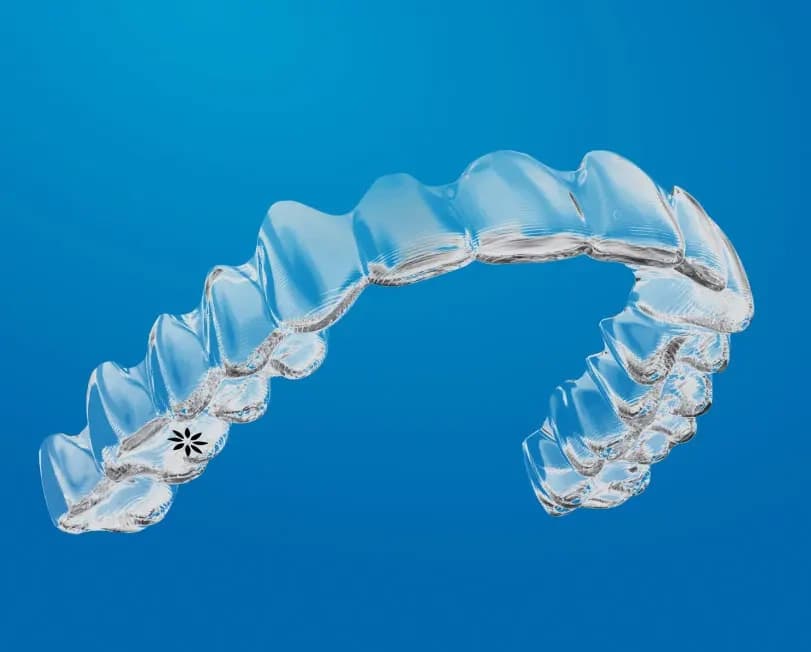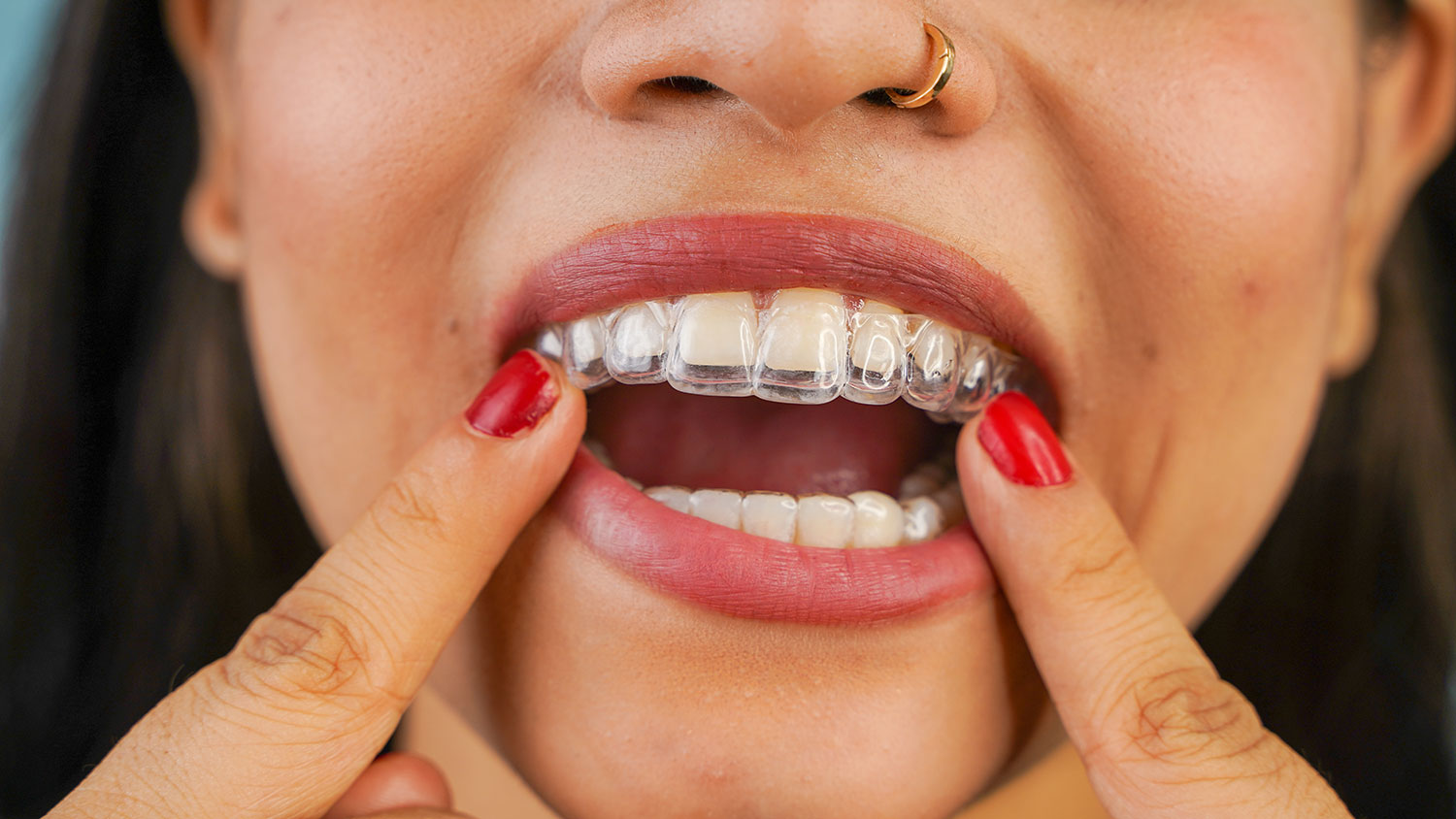Invisalign vs. Typical Braces: Which Option Is Right for You?
When taking into consideration orthodontic treatment, the choice between Invisalign and standard dental braces offers several crucial aspects that warrant mindful assessment. Invisalign uses a discreet choice with detachable aligners, while traditional braces offer a much more visible yet effective service for serious imbalance. Each option includes unique advantages and downsides connected to looks, convenience, therapy period, and expense. Comprehending these subtleties is critical for making an informed choice that aligns with your individual preferences and lifestyle. The inquiry continues to be: which alternative will ideal fulfill your orthodontic needs and expectations?
Review of Therapy Alternatives

In comparison, standard braces include steel brackets and cords that are bonded to the teeth. This method uses constant stress in time to attain alignment. While reliable for complex orthodontic concerns, standard dental braces require normal brows through for adjustments and can present difficulties in maintaining oral health as a result of the difficulty of cleansing about brackets and wires.
Both alternatives have their qualities, and the selection commonly depends upon certain oral problems, lifestyle preferences, and individual compliance. Inevitably, consulting an orthodontic professional is important for establishing one of the most suitable treatment plan customized to private demands. Recognizing the subtleties of each alternative can significantly influence the general success of orthodontic therapy.
Aesthetic Considerations
A substantial variable affecting the selection in between Invisalign and traditional dental braces is the visual charm each treatment offers. Invisalign aligners are crafted from clear plastic, making them basically undetectable when used.
On the other hand, traditional dental braces contain metal braces and cables, which can be more recognizable. While innovations in orthodontic innovation have brought about the growth of smaller braces and colored elastics, traditional dental braces still preserve an even more obvious account. For some people, the presence of dental braces may deter them from seeking needed treatment.
Ultimately, the selection between Invisalign and standard dental braces might hinge on individual choices relating to aesthetics. Individuals who prioritize discernment commonly lean toward Invisalign, while those who are much less concerned regarding visibility might select conventional dental braces. Comprehending the aesthetic ramifications of each option is crucial for making a notified decision that lines up with one's lifestyle and preferences.
Convenience and Convenience

In regards to convenience, Invisalign aligners are detachable, making it possible for individuals to enjoy their preferred foods without limitation and preserve optimal oral health. Cleaning and flossing are streamlined, as the aligners can be secured during these routines, whereas standard braces require mindful navigating around cords and braces.
In contrast, conventional braces require normal changes, making them less hassle-free for those with busy routines. Overall, the convenience and benefit of Invisalign make it an appealing selection for lots of individuals seeking orthodontic therapy.
Treatment Duration and Performance
While both Invisalign and typical dental braces work in dealing with dental misalignments, the period of official website treatment can differ considerably between both alternatives. Commonly, Invisalign therapy can take anywhere from 12 to 18 months, relying on the complexity of the instance. The clear aligners work by slowly changing teeth into their preferred placements, and regular follow-ups with an orthodontist assistance guarantee progression remains on track.
In comparison, standard dental braces frequently call for a longer dedication, usually ranging from 18 months to three years. This is because of their set nature and using wires and brackets, which can be extra reliable for extreme misalignments and complex cases (Invisalign). The therapy performance of traditional braces is well-documented, as they allow for exact changes and greater control over tooth movement
Inevitably, the option between Invisalign and typical braces may rest on both the anticipated treatment period and the specific oral concerns available. Consulting with an orthodontist is crucial, as they can supply tailored suggestions based on specific demands, ensuring the picked approach lines up with preferred timeframes and outcomes.
Price Contrast and Insurance Policy Alternatives
Expense plays a significant function in the decision-making procedure for people taking into consideration orthodontic therapy, whether going with Invisalign or traditional dental braces. On average, the cost of Invisalign arrays from $3,000 to $8,000, while standard braces typically set you back between $2,000 and $6,000. Variables affecting these prices include the intricacy of the situation, the duration of therapy, and geographical location.
Insurance policy coverage can significantly influence out-of-pocket expenses. Several oral insurance coverage plans provide partial protection for orthodontic treatments, yet the specifics can vary extensively. It is vital for individuals to examine their insurance coverage to determine the level of coverage visit the website for either choice. Typically, standard braces might be a lot more frequently covered by insurance coverage plans compared to Invisalign, which some insurance providers classify as a cosmetic procedure.
In addition, several orthodontic methods supply flexible layaway plan, making both therapy alternatives a lot more obtainable. Individuals ought to ask about prospective funding options and discounts for upfront payments. Examining the complete price, including insurance policy advantages and layaway plan, is essential for making an educated decision that lines up with both visual preferences and budget plan considerations.

Conclusion
In summary, the choice in between Invisalign and typical braces hinges on numerous factors, consisting of aesthetic choices, comfort, treatment duration, and cost. Invisalign offers a discreet, detachable alternative that facilitates dental health and dietary versatility, while standard braces might be preferable for complex dental problems and often come with a reduced cost point. Ultimately, assessment with an orthodontist is necessary to evaluate specific circumstances and determine one of the most ideal therapy choice for achieving optimum oral alignment.
When considering orthodontic treatment, the selection between Invisalign and traditional dental braces provides several important aspects that merit cautious examination.Comparing Invisalign and typical dental braces reveals distinctive treatment alternatives for orthodontic improvement.While both Invisalign and standard dental braces are effective in correcting oral misalignments, the period of treatment can differ dramatically between the 2 choices.Cost plays a substantial function in the decision-making process for people considering orthodontic treatment, whether deciding for Invisalign his explanation or conventional dental braces.In summary, the selection between Invisalign and typical braces pivots on multiple aspects, including visual preferences, comfort, therapy period, and cost.